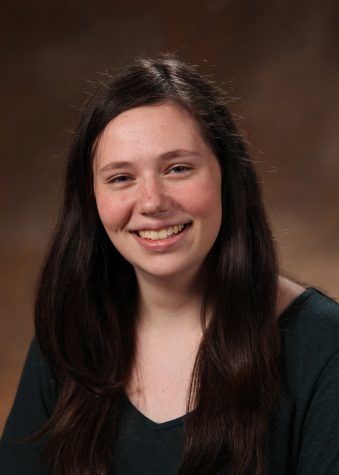Coming to JDS Late in the Game: New Juniors and Seniors Find Their Way
Senior Tani Makovsky poses with fellow JDS seniors at a recent Maryland basketball game. Makovsky transitioned to JDS during his junior year, and despite the late switch, quickly felt that he had become “part of the grade.”
December 8, 2015
Walking through the doors of CESJDS on Sept. 1, junior Danielle Schwartz’s senses were overwhelmed with the unfamiliar faces and chattering voices of her new classmates. As Schwartz navigated her way through the bustling alcove, she was met with a pink note pasted on her locker. A message welcoming Schwartz to the school was written in sweeping blue font, and was signed by a fellow classmate.
This is Schwartz’s first year at JDS. She formerly attended a girls boarding and day school in Virginia, but decided to transfer, as JDS’ schedule allowed her more flexibility during the school week, and enabled her to pursue a Jewish education.
Junior Avital Krifcher was one of Schwartz’s buddies. On the first day of school, Krifcher was the first to approach Schwartz, and wanted to help Schwartz’s move to JDS be as smooth as possible.
According to Director of Upper School Admissions Miriam Stein, new students’ families are assigned a buddy family to help build a “social network,” and the new student is assigned a student buddy to help them acclimate to their classes. At first, Schwartz thought that it was odd to have two buddies, but once the school year started, Schwartz found that it was beneficial because she knew more than just one person. Krifcher was one of these people.
“I like to think of it as a built-in person to sit with at lunch, because one of the most stressful things about [the first day of school] is, ‘Where am I going to sit at lunch?’ when you have freedom to go where you want,” Krifcher said. “I always made sure that my buddy, Danielle, knew where to find me.”
Senior Tani Makovsky, who transferred to JDS during his junior year, said that time outside of class offered him an opportunity to bond with his peers.
“In lunch [is] where I was able to really meet a lot of new people,” Makovsky said. “So, that was very helpful.”
In addition to the social transition, new students may also encounter an academic change when they come to JDS. Makovsky, who came from Berman Hebrew Academy, was not unconversant with JDS’ dual curriculum, while Schwartz was phased with courses that she was not familiar with — notably, Hebrew class. Schwartz is in a freshman Ulpan class, a class that introduces the Hebrew language. However, she felt that there was not a class “specifically designed” for people who “really don’t know any Hebrew.”
Although the class is designed as an introduction to Hebrew, Schwartz believes that the class was not a great fit for her because it included students who had some prior knowledge of Hebrew, while Schwartz was completely unfamiliar with the language.
The placements for these classes are determined by placement tests that are taken by all new students. According to Stein, an Ulpan class is offered when there are enough students who need it.
“We do our best to provide the right classes at the right levels,” Stein said.
According to Stein, JDS is very equipped to help students transition to the school no matter their previous educational experience. To cater to students without prior Jewish education, JDS offers a Bridges to Jewish Studies program. The program encompasses an Ulpan Hebrew class and an Introductions to Judaics class. The classes teach fundamentals of the Hebrew and Jewish culture. For example, the Ulpan curriculum includes lessons on counting and the months of the year, and Introduction to Judaics class covers a basic understanding of the Tanakh and its stories. Stein said these classes “are meant to help students fill in gaps, and help them mainstream with the rest of the students.”
According to the CESJDS Course Offerings Book, the Introduction to Judaics class is meant to teach lateral entry students “foundational Biblical and Rabbinic texts” skills. Students taking this course investigate “key concepts, terminology and narratives” in order to prepare themselves to study in future JTTP courses.
Senior Rivka Magier, who transitioned to JDS this fall, did not come from a Jewish school, and therefore encountered a similar academic transition to that of Schwartz. Magier was not used to focusing on Judaism seven days a week.
“It’s very strange for me to think about Jewish things on a weekly basis because usually it is just for the weekend, but I like it a lot,” Magier said.
Even though Makovsky did not experience a change in the Judaic curriculum when he switched schools, he noted that one of the differences between JDS and his former school is that JDS offers a greater selection of classes. Makovsky believes that the JDS classes are better fitted to his learning style, and he appreciates the greater variety both in his new classmates and in his new classes.
When Makovsky first made the switch to JDS, his most stressful subject was English. He was unaccustomed to the rigor of the English curriculum, and its focus on the development of his writing.
Despite Makovsky’s struggles, he felt that by November of last year, he had familiarized himself with the school environment.
“The first few weeks were a little bit hard, but everyone was pretty welcoming, and by November, I felt that I had already settled in,” Makovsky said. “I felt like I was a part of the grade, and it was all good.”
During Makovsky’s junior year, he did not rush to get involved in many extracurricular activities, as he wanted to give himself time to adjust to his new school. However, this year, he elected to join the varsity soccer team. Like Makovsky, Magier decided to focus on feeling comfortable in her new classes and her work before participating in extracurriculars. Now that she has had the first quarter to adapt, Magier believes that the tight-knit community has made her want to get more involved.
On the other hand, Schwartz jumped right into several extracurriculars. Involving herself in the tennis team and the school musical helped her acquaint herself with students and faculty, and has allowed her to meet people she would not have met otherwise who have similar interests as her.
While coming to JDS towards the end of high school did initially prove to be a challenge, Schwartz, Makovsky and Magier did not let this intimidate them.
“When I was thinking about [the transition], I thought, ‘Oh, this is going to be really scary because everyone has been here since kindergarten and they all have their friends, and they’re just going to be like ‘ew who is that new girl?’” Schwartz said. “But, it wasn’t like that at all. People were really, really welcoming, which helped a lot in classes because I was immediately able to ask people for help.”








